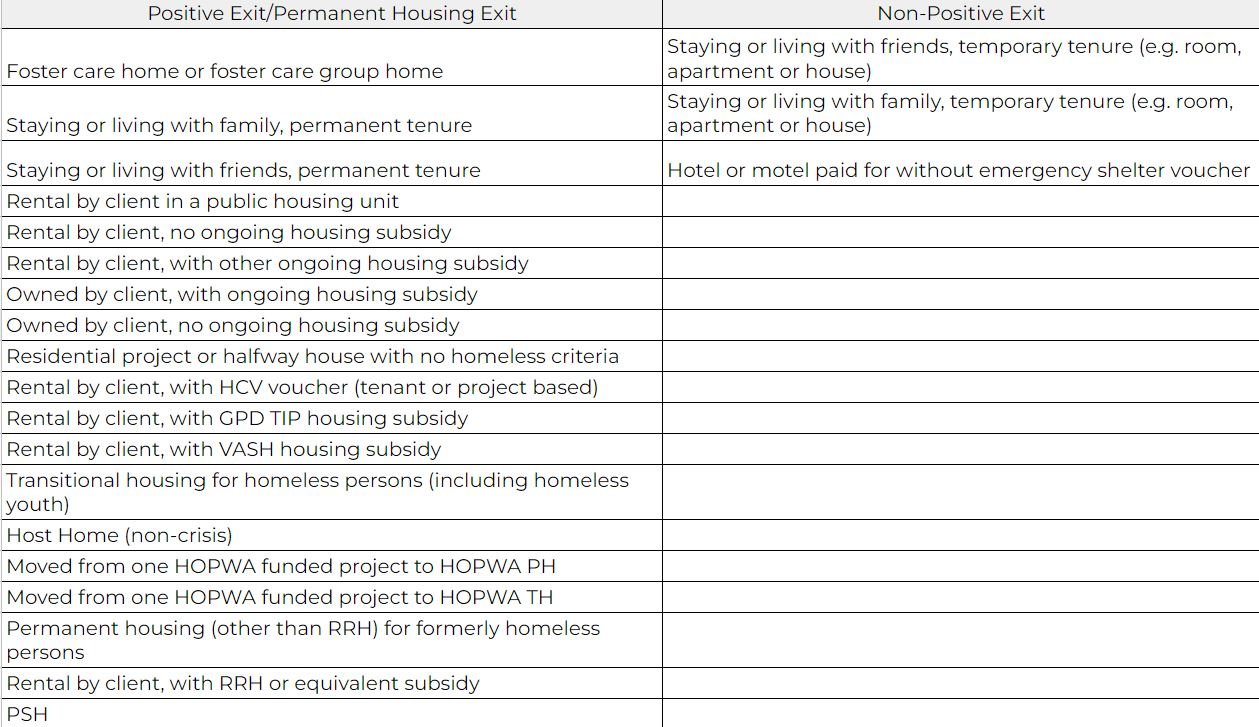23A.) Does your community accurately account for historical changes in homelessness status, including the initial date an individual or household was identified by your system, to consistently and accurately calculate the length of time they spend homeless, including length of time on list at any point in time?*
Purpose: To be able to identify the length of time a young person spends actively homeless and the number of days they have been on the list rather than just the amount of time they are enrolled in a project. If we only looked at the length of time young people who are permanently housed have spent experiencing homelessness we would be missing the young people still waiting in the system for housing.
When you are able to look at the breakdown of time between Date of Entry to each point of assessment/contact you are able to take this information and identify policies within your system that may need to be changed or updated by coming up with improvement ideas.
For example: if it is 30 days from date of entry to the date of CE assessment you can start asking these questions about your policies and procedures:
Why is it a 30 day delay?
Who is doing their assessment?
Is the agency doing the assessment different from the Entry provider?
What can we change to lessen this time between entry and CE assessment?
Length of Time Categorization Tool: One way of tracking LOT data in an actionable way for case conferencing is using a tool to break down your list of young people into buckets according to how long they have been experiencing homelessness. All you need to do is copy in HMIS IDs and date added to the BNL and the young people on the list will be categorized into different buckets according to the length of time they have been experiencing homelessness. You could also customize this tool to add demographic columns if you want to see if certain populations of young people are experiencing homelessness for longer than others.
23B.) Does your community accurately account for historical changes in homelessness status, including the initial date an individual or household was identified by your system, to consistently and accurately calculate the length of time they spend homeless, including length of time from identification to housing after households are positively exited?*
Definition of positive exit: An individual or household has achieved a positive exit from the homelessness system if they achieve one of the following:
Permanent housing: Moving into a residence in which they are named in the lease or deed; OR
Having moved into a residence:
That they choose; AND
In which they expect to be able to remain indefinitely (such as but not limited to reuniting with family without being named on a lease)* or are in a safe/stable long term housing program such as transitional housing.
Note: The household’s chosen destination must not be considered an unstable living situation.
*In these cases, their exit destination should be categorized as “staying or living with (friends or family) permanent tenure”
Length of time to Positive Exit: Earliest project start date to date of positive exit
23C.) Does your community break down your length of time data by the following categories to understand who you are serving in your system:*
Race
Ethnicity
Sexual Orientation
Gender Identity
Age
Length of Time Categorization Tool: One way of tracking LOT data in an actionable way for case conferencing is using a tool to break down your list of young people into buckets according to how long they have been experiencing homelessness. All you need to do is copy in HMIS IDs and date added to the BNL and the young people on the list will be categorized into different buckets according to the length of time they have been experiencing homelessness. You could also customize this tool to add demographic columns if you want to see if certain populations of young people are experiencing homelessness for longer than others.
When you are looking at your LOT you should be able to compare the number of days each population is experiencing homelessness in order to identify where certain young people are in the system longer before getting housed.
What improvement projects to test to reduce length of time experiencing homelessness?
Change Ideas: When It's Hard to House a Client - Google Docs
When looking at your BNL you can filter your dates to oldest dates first to identify who has been on your list the longest ( or longest LOT) by doing this you can do something as simple as case conference those names whether it be 2 or 10 names to identify needs and housing barriers.
You can also have your referral teams look at young people who have been waiting for a RRH / PSH referral and address what barriers they may be having in accepting a referral. Do they need an ID? Are their current assessments up to date with current information (i.e. disabilities)?
Looking at Diversion and how to improve the processing of Diversion fund requests . We all know that if it takes too long a landlord or property manager will not wait forever and will fill the unit if no fund or promise of funds is made. So can you get a promissory note? How can you advocate for the fund to secure the unit to house the young person?
Filter your BNL by program name. Are there certain programs that have a longer LOT than others? Is there something program-specific that is holding their process up? Are there programs that consistently show a shorter LOT from identification to housing for YYA? What learnings can you gather from them to replicate elsewhere?




